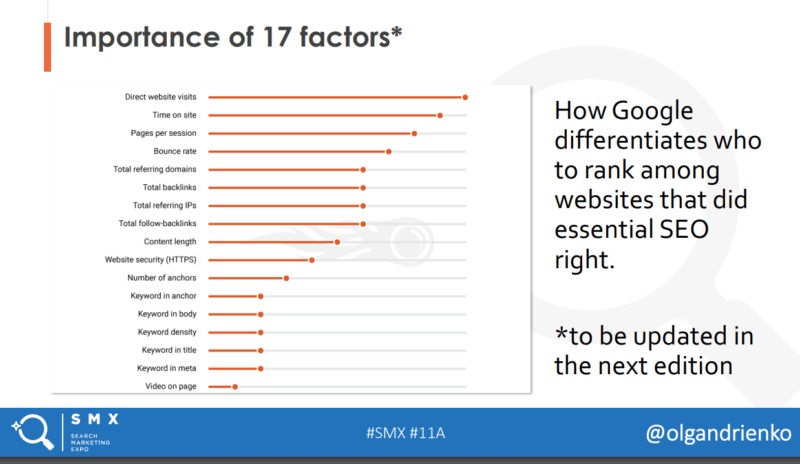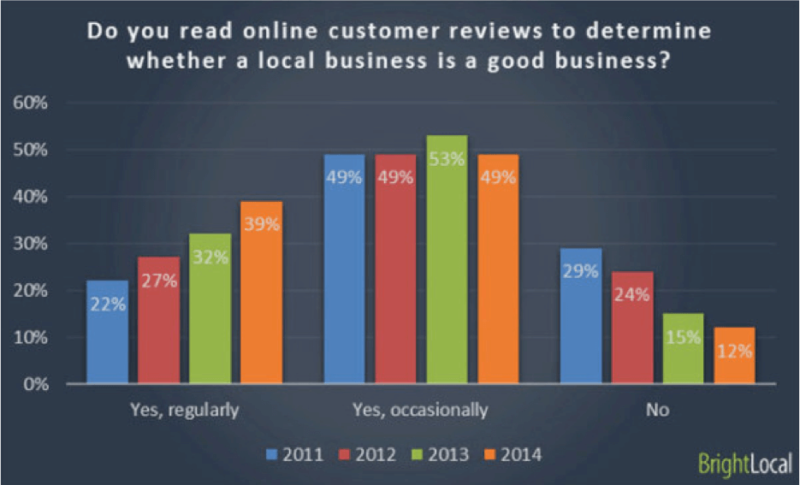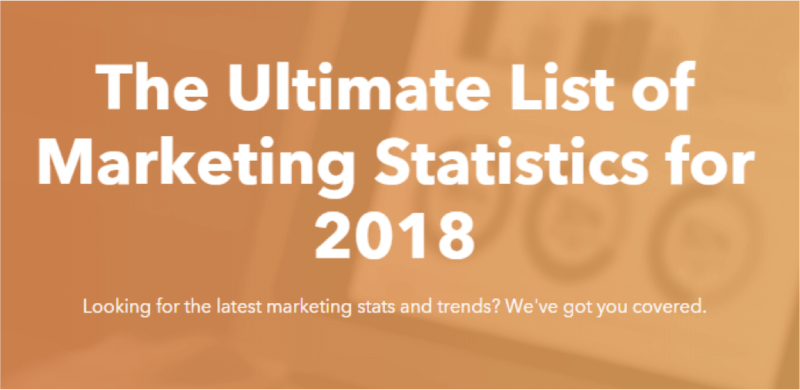How to build authoritative links with data-driven content
Contributor Pratik Dholakiya shares three types of data-driven content that will improve your ability and opportunity to earn authoritative links.
 Looking for the extra punch your content needs in order to earn links from your outreach and publishing efforts? One important solution lies in a place that may not sound exciting: data.
Looking for the extra punch your content needs in order to earn links from your outreach and publishing efforts? One important solution lies in a place that may not sound exciting: data.
We all understand the importance of search engine optimization (SEO) and link building in particular. But earning links can be hard unless we understand why people link.
Most people who link to a web page are looking for something to support a claim or back up their narratives; they are looking for data to support their ideas.
Let’s look at three types of data-driven content that will dramatically improve your ability and opportunity to earn authoritative links.
1. Data analysis
Content-based data analysis might sound dry, but the reality is that much of the best-performing, link-attracting content on the web is the result of data analysis.
Content data analysis includes original research, such as correlation studies and other applications of statistical techniques to data. The data itself may be publicly accessible, or it may be obtained through more proprietary means.
As an SEO, you may be familiar with ranking correlation studies conducted by various companies like SEMrush and Ahrefs, which have earned each company many backlinks.
In the case of these ranking correlation studies:
- They used proprietary tools to crawl the search engine results for a large list of keywords.
- They crawled various on-page and off-page metrics associated with the pages in the search results.
- They reported correlations between these metrics and rankings in the search results.
Correlation measures how often two factors go together, on a scale from -1 to 1 (or sometimes -100% to 100%), but it can’t tell you whether one factor causes the other, if they share a common cause, or if “chance” is responsible for the correlation. Even so, correlations are a good place to start if you are looking for possible causal connections to look into.
For that reason and more, people in the SEO community find these kinds of correlation studies very useful.
But analysis of this kind is useful outside of the SEO community as well.
One site that has produced a lot of this type of content is the dating site okcupid.com.
For example, one of their posts was an analysis of how people rated the attractiveness of people on the dating site. There were surprising revelations, such as camera flashes adding seven years to the apparent age of the person in the photo:
As of this writing, this post has links from over 300 domains, suggesting just how powerful data analysis-based content can be, even in the consumer market.
But you don’t necessarily need to have your own proprietary data to create this kind of content. Consider analyzing the publicly available data provided from sources such as:
- United States Census Bureau.
- The Dow Jone Weekly Returns.
- Bureau of Labor Statistics.
- Yelp Open Dataset.
Cross-referencing these data sets against each other to find correlations can be an especially interesting way to identify novel information worth discussing in a data-driven piece of content.
2. Surveys
A highly popular post on Search Engine Land was a survey conducted by BrightLocal entitled “88% Of Consumers Trust Online Reviews As Much As Personal Recommendations.”
This survey was based on answers from 2,104 recipients, and it earned over 140 backlinks.
Surveys like these tend to make their way through the press and pick up a lot of links, provided the topic of the survey is original, relevant enough to be newsworthy and interesting to your core audience.
Here’s how to get started creating a survey like this and putting together the appropriate content to match:
- Identify a question that your target audience, or their influencers, would be interested in knowing the answer to. It needs to be a quantitative question and if covered before, enough time should have passed that the previous studies are out of date.
- You can search forums and Q&A sites for questions, with an eye for those that don’t have any satisfactory quantitative answers.
- Choose a platform for your survey, such as Google Surveys or SurveyMonkey.
- Keep the survey as short as possible or you are likely to get fewer or less accurate responses.
- Your questions should not be open-ended, and the answer options should be informative.
- After getting your results, identify the most eye-catching piece of information in a quantifiable form, and make that your headline. The content should be built around the headline, since this is what most people will see and share.
- Flesh out your content using the results of the survey but be sure to contextualize by providing your expert interpretations.
- Reference previous research by yourself and others, and refer to examples or your own experience.
3. Research compilations
A research compilation is simply a post that compiles previous data-focused research and uses it to create a comprehensive overview of a topic.
While an individual research compilation won’t necessarily capture as much press as a piece of original research, research compilations can be created more easily and consistently.
Since they collect results from a wide range of sources and address a topic more comprehensively, they are often more evergreen and can continue to pick up links over the long term.
They can also be regularly updated as new information becomes available.
The image above is from a post at HubSpot that has earned almost 2,000 links. The post is a massive roundup of bullet points, each of them sharing a quantitative fact from a previous study. The facts are organized into categories and use a huge number of resources.
Massive lists like these aren’t the only way to do research compilations, however.
Consider the Search Engine Land “What Is SEO?” guide. It, too, has picked up a massive number of links and is the second most linked content on this site. It introduces people to SEO and is reputably sourced throughout.
While the Search Engine Land guide doesn’t fall within the most strict definition of a “data-driven” post, it is very much a compilation of prior research and an alternative example of how to approach this type of content.
Despite the variety of ways in which a research compilation can be approached, here are some commonalities you’ll find in most successful examples:
- The content is more comprehensive and useful. It one-ups any previous content on the same topic by providing all of the value that content provides, plus a little more.
- They are heavily sourced. The information is not being presented out of thin air, and the sources are authoritative. The content is factually dense, with a limited amount of elaboration, and only enough interpretation and context to maximize practical use in the shortest amount of time possible.
- They are evergreen. They are designed to be referred back to often, bookmarked and revisited regularly. While they will be useful on their first visit, they contain enough information that it’s not possible to absorb all of the information in one go.
- They are well structured. Despite citing a large number of references, these posts are still designed to work as a cohesive whole by incorporating clear and easy to navigate categorization, an order in which to absorb the information, or both.
- They frequently include some data visualization. To avoid becoming a monotonous stream of facts, the content uses data visualization or may even be an infographic.
- Attention is drawn toward them in the structure of the site itself. They are featured readily in the main navigation, and calls to action may exist elsewhere on the site to point them out.
Conclusion
Data-driven content performs well because hard facts and numbers give your words weight in a way that isn’t otherwise possible. The concrete nature of data-based arguments and advice captures attention and makes you a source worth citing.
Data analysis allows you to find interesting connections between phenomena that pose meaningful implications for your readers. Surveys keep your audience in touch with the zeitgeist, and research compilations produce excellent, evergreen content that they will refer back to time and time again.
Contributing authors are invited to create content for Search Engine Land and are chosen for their expertise and contribution to the search community. Our contributors work under the oversight of the editorial staff and contributions are checked for quality and relevance to our readers. The opinions they express are their own.
Related stories
New on Search Engine Land




